The Fujifilm X-S10 Is a Compact Pro Camera Loaded With Super Cool Features
Why Fujifilm’s latest shooter is a massive upgrade from your smartphone’s camera.
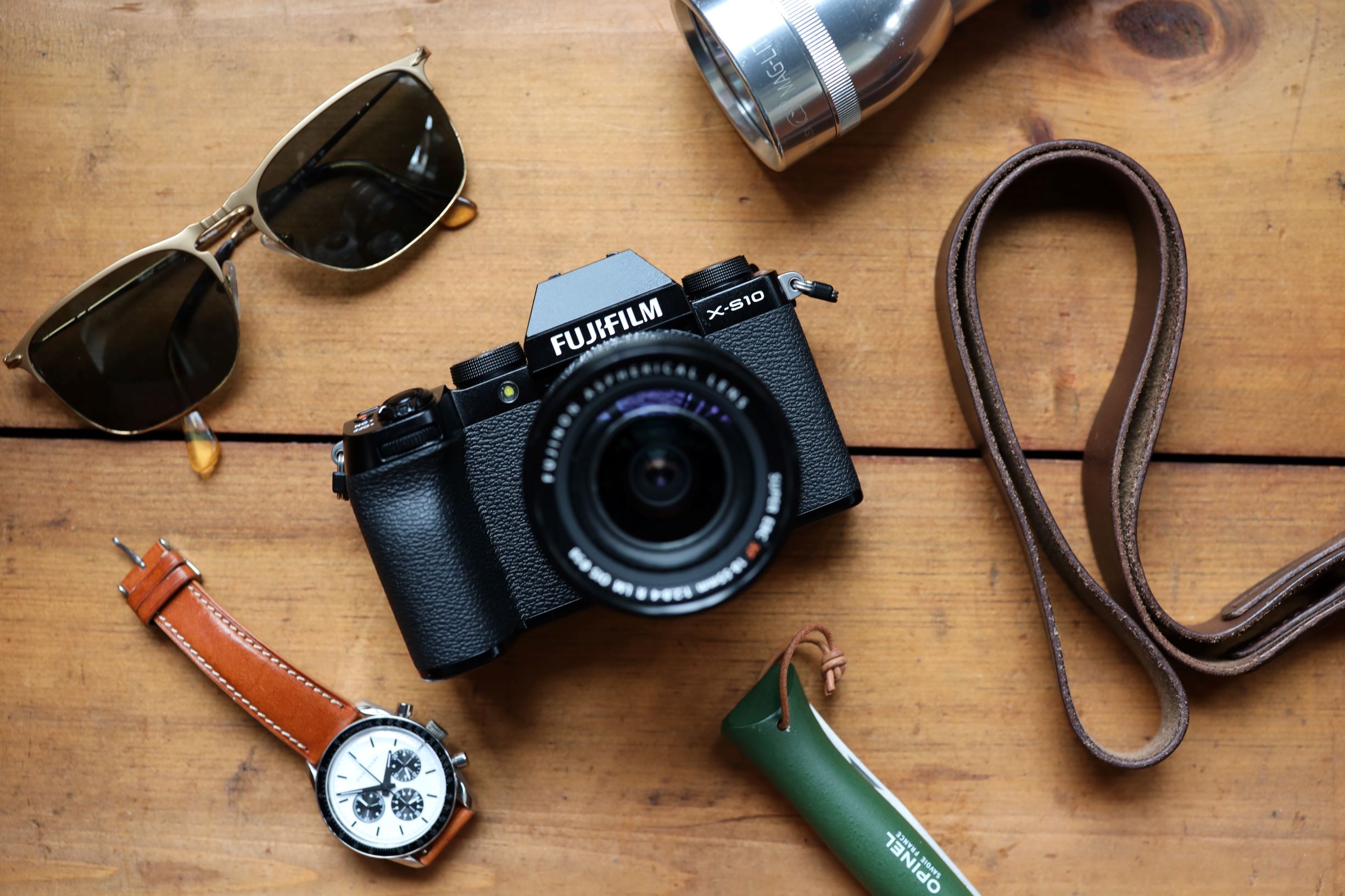
If you’re new to Fujifilm, here’s the very basic big picture: Fuji sensors are renowned for their colors, particularly for photographing people. They don’t make full-frame cameras, but they have an alluring range of camera bodies and lenses for the APS-C sensor size. The monochrome color palette, vintage styling and stellar build quality of Fuji products have a strong emotional and nostalgic appeal. Their lenses are comparatively well-priced, so it’s easier to build up your arsenal of glass.
And lastly, perhaps because of this combination of quality and nostalgia, along with the company’s reputation for being uniquely responsive to users, Fuji has a fan base that borders on cultish.
In-Body Image Stabilization

One of the biggest selling points of the X-S10 is its in-body image stabilization, or IBIS. That means that even if you use a lens that doesn’t have a stabilization feature, the camera will do that for you. What that means for photography is that you can pick up one of Fuji’s tiny f2 lenses as a walkaround lens, and with the in-body stabilization of this camera, you’ll be able to use it in more low-light situations, because you can use slower shutter speeds before your pictures start getting blurry.
For video, it means that if you’re walking around shooting a YouTube video on a non-stabilized lens, you’re not going to make viewers sick with your Blair Witch shake. And if you’re filming yourself, you can also monitor yourself in the flippy screen––which flips out to the side rather than the top, so as to not interfere with a hot-shoe-mounted mic. The dedicated movie button makes it easier to switch between stills and video, instead of having both mapped to the shutter button. The X-S10 shoots 4K video at 30 frames-per-second, but not the 60fps achieved by Fuji’s more pro-centric X-T4.
18 Different Film Simulations
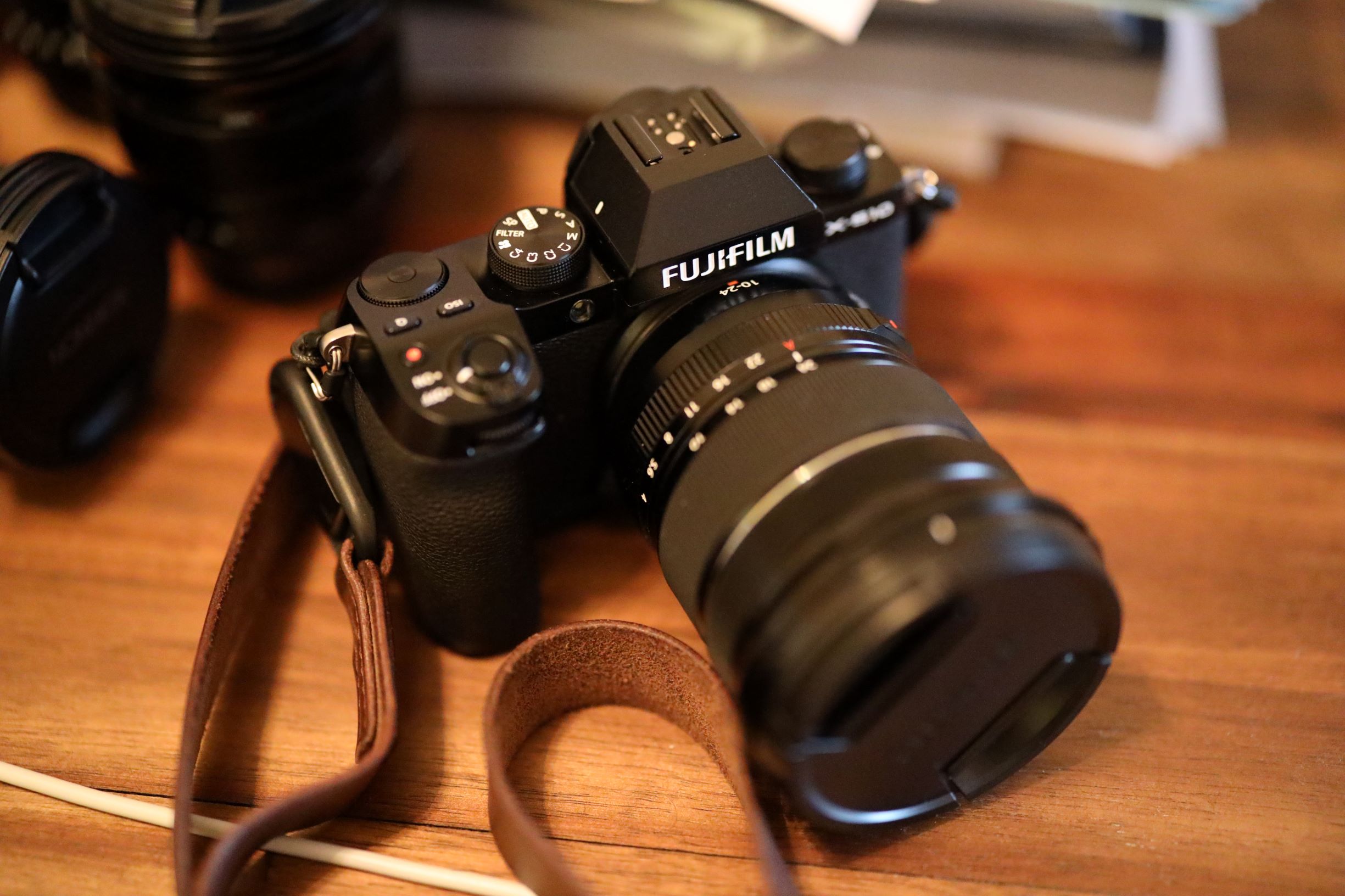
This camera is aimed at content creators who want to share directly to social media without having to necessarily deal with a computer editing process. As such, the X-S10 packs 18 on-board film simulation modes. Think of these like Instagram filters baked into the photographs themselves––so you can have a lot of creative freedom without touching your computer. If you shoot raw files, you can then test out all the different film simulations on your pictures to see which simulations you like best. If you shoot JPEG, once you pick a film simulation, you’ve got to live with it or re-edit it later on your computer. Fuji also makes it easy to wirelessly connect the camera to your phone to facilitate easily uploading to the web.
Fast Autofocus for Photos and Video

Fuji has really come a long way over the past few years with their focus tracking and eye autofocus—both for stills and video. The eye-detection feature works very well, and you can even set a priority for right or left eye. One thing I did notice, however, is that in the age of Covid, if you’re photographing someone in a mask, the face detection does struggle a bit more to recognize a masked face as a face.
The Best Handling Fuji?
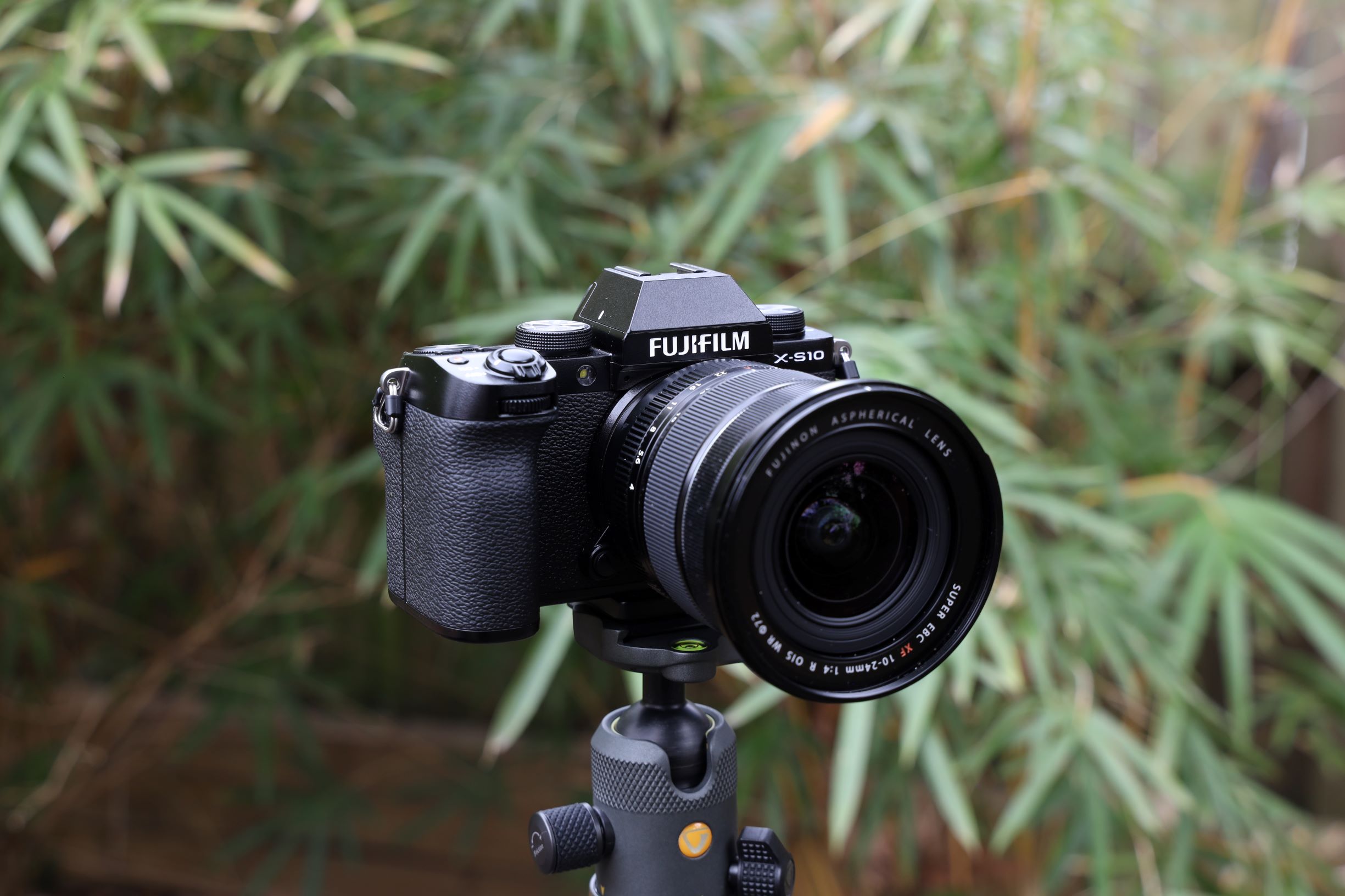
The ergonomic star of this camera is the substantial hand grip, allowing you to easily and securely one-hand it. It also means you can pair the camera with both small and large lenses without it feeling out of balance. Overall, the magnesium alloy body is rugged, it has a very reassuring heft, but weighing about one pound, it’s by no means heavy.
Another physical feature worth mentioning is the built-in flash which, while small, is certainly better than nothing in a pinch. Also, the screen can also be flipped around to face the back of the camera, to protect it while it’s bumping around in a bag with your car keys. Though the faux-leather texture on the back is a bit, well, faux.
This camera doesn’t have dedicated dials for ISO, shutter speed, and exposure compensation like other Fuji cameras, but there is a dedicated ISO button, and you can easily map the other two functions to programmable manual dials. So, rather than intimidating you from the start, the X-S10 layout starts with a simple PASM dial (Program, Aperture, Shutter Speed, Manual), and you can lean on more dials and buttons as your knowledge of photography grows.
The Best Lens to Buy With It

Another thing Fuji is known for is the quality of their kit lenses. There are two kit lens options with the X-S10: an 18-55mm with a variable f2.8-4 aperture, and a 16-80mm with a constant f4. (Bear in mind that due to the crop factor of the APS-C sensor, these lenses equate to 27-84mm and 24-122mm on full-frame cameras). Both lenses are widely used by pro photographers with far more expensive glass in their kits. I recommend the larger 16-80; it’s newer, it gives you a wider angle and more reach, and f4 is still wide enough to get some good background blur (bokeh), especially if you zoom to 80mm.
Shoot with the 16-80mm for a while, then look back at your favorite pictures in Apple Photos, Adobe Lightroom, or whatever photo editing program you use, to find out the focal lengths of your favorite shots––all that data is saved with your pictures, so you don’t have to remember it. That will help you determine where you might want to invest in additional lenses.
Value

The fact that the X-S10 has in-body stabilization, and the same 26.1-megapixel sensor as the pro-level X-T4 highlights one of the best things about Fujifilm: they’re not afraid to cannibalize themselves to make the best camera available at the best price. The X-S10 lacks the X-T4’s weather sealing, the IBIS is not quite as good, the electronic viewfinder is not as large, and it doesn’t have dual SD card slots, among other differences.
But if you don’t mind the smaller viewfinder or prefer using the LCD to compose your shots, if you don’t need a backup SD card as insurance for a hired event gig, and you can avoid shooting in the rain, then you’re essentially getting the guts of Fuji’s pro camera for $700 less by buying the X-S10.
The X-S10 for Fuji Fans
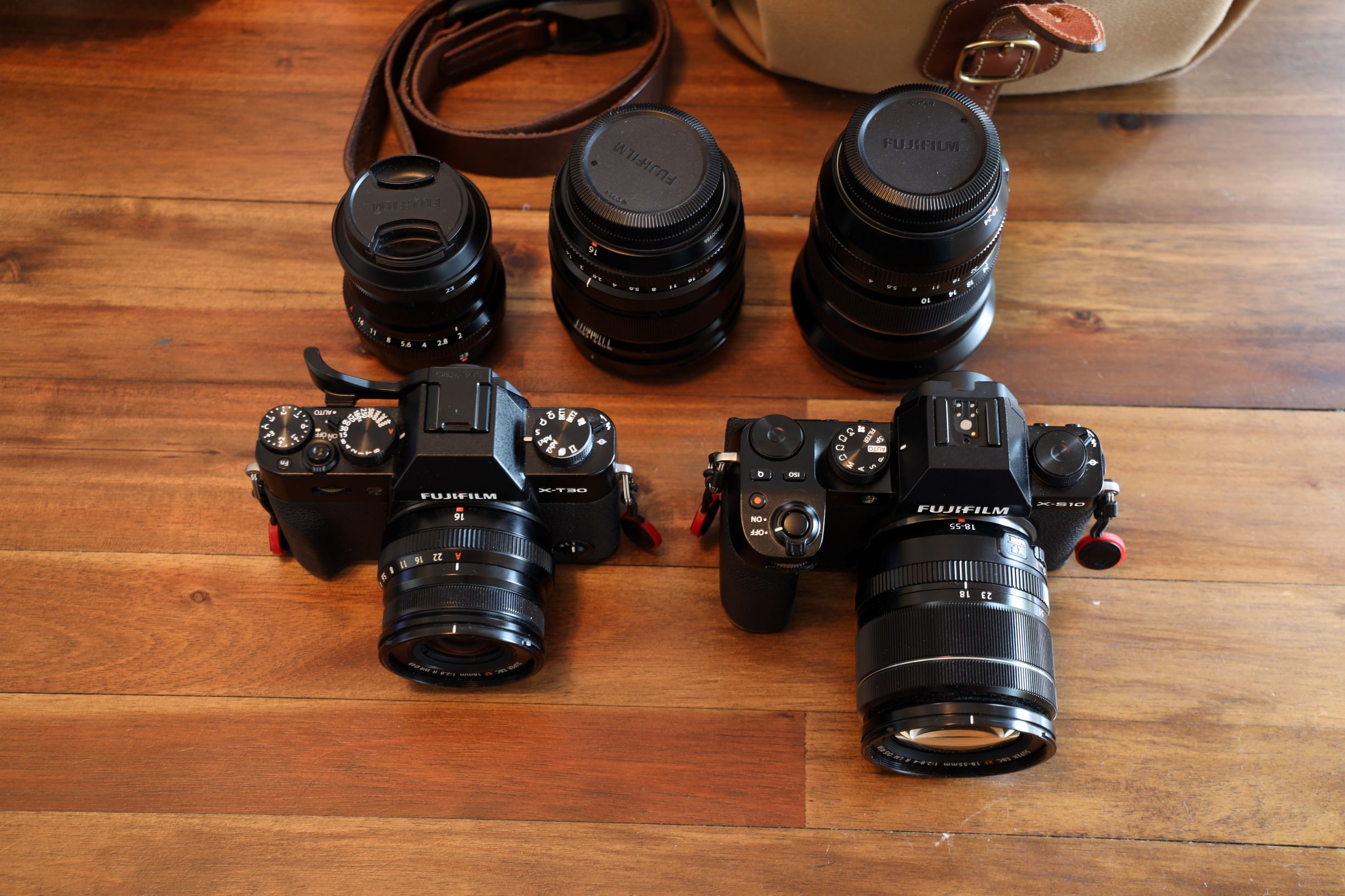
If you’re already on the Fuji train, that’s where this camera gets a little tricky…. I currently own the Fujifilm X-T30, which I was instantly charmed by. But while my eyes love it, my hands do not; it’s a camera I have to pinch, rather than grip. The beefy grip on the X-S10, however, makes it a joy to use over long periods of time.
But while the grip and the forward-shifted shutter button solve my ergonomic gripes, the X-S10 does diminish some of the visual joy I get from the more retro-inspired styling of the X-T30. But then again, this camera is more about drawing new people into the Fuji fold, than it is about pleasing the army of Luddites who already drank the Fuji Kool-Aid.
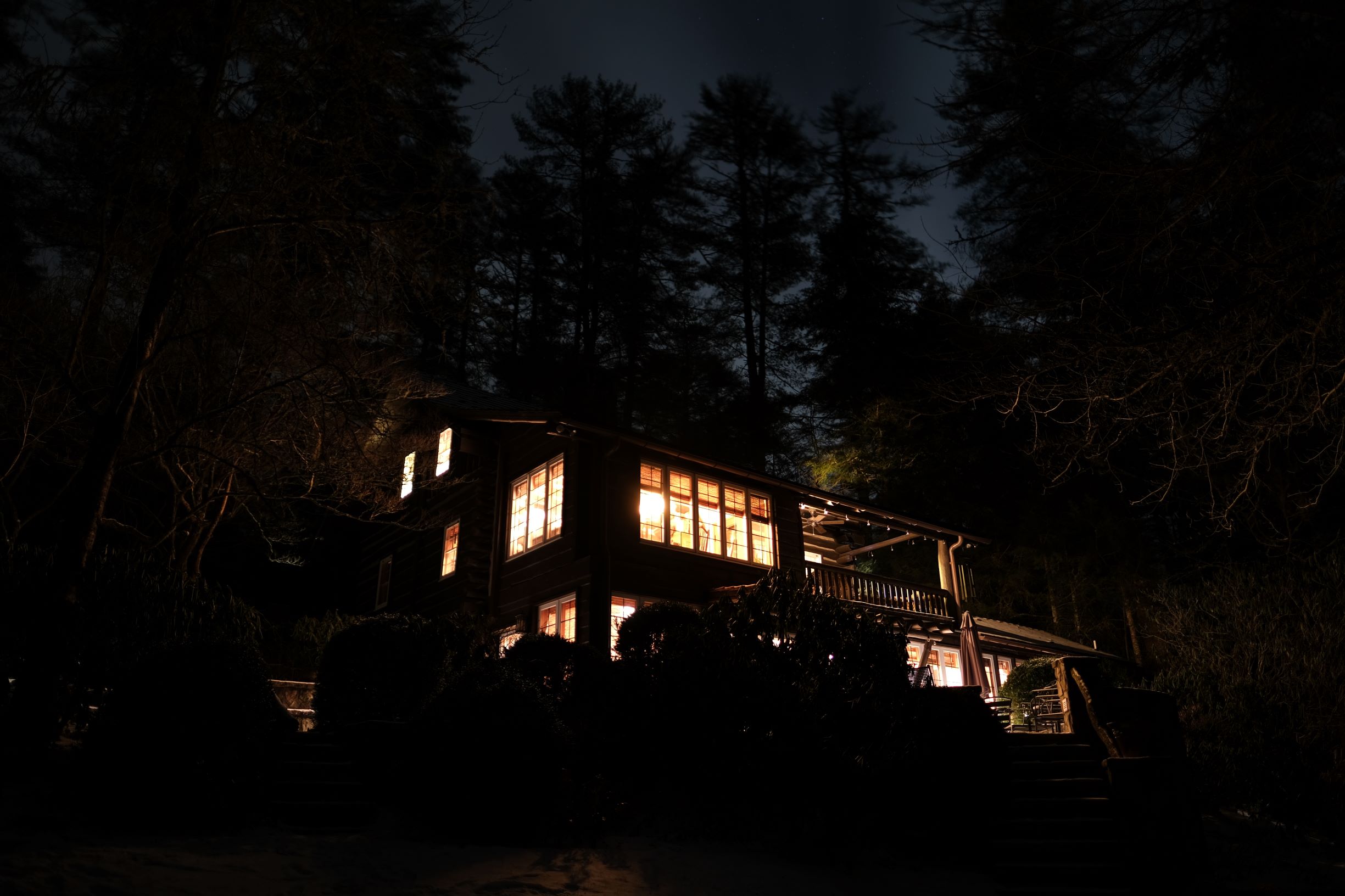
I tested the X-S10 along with Fuji’s new wide-angle 10-24mm f4 zoom lens, and their vaunted 16mm f1.4 prime. And after a month with these two lenses, I would buy them both if money were no object. I shot four car reviews using mainly the 10-24mm zoom, and found it to be an incredibly versatile lens that I could leave on all the time when I needed to capture a scene around a car, and it was also wide enough for doing car interiors (It would be ideal also for house interiors.)
I found the 16mm f1.4 to really excel at photographing people; pulling in their surroundings while vividly rendering skin tones and faces. I also tried it on a tripod for nocturnal landscape shots, and was amazed by the colors it rendered from the night sky.
Conclusion
https://www.instagram.com/p/CJB4d04skiJ
As of right now, I don’t think there’s any better entry point into the Fuji X system than the X-S10. It’s a compact, take-anywhere and do-anything camera that will put the pictures and video coming out of your phone to shame.
We’ve reached the point in consumer electronics where quality that just a few years ago was only accessible in pro camera gear can now be found in more entry-level hardware, and the X-S10 exemplifies this new reality: good enough to shoot a film, host a YouTube channel, or photograph an editorial feature. Simply put, you get a lot of value for the price, and a healthy dose of the Fuji look, without having to sacrifice comfort for the sake of vintage purity.
Buy the Fuji X-S10 with a 16-80mm lens for $1,499 here.
